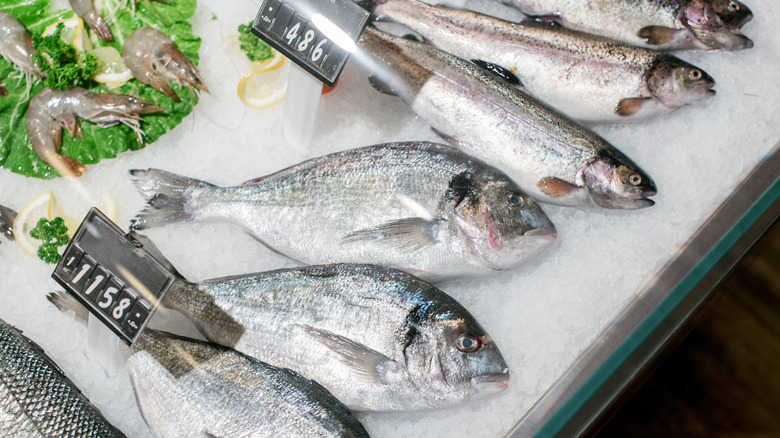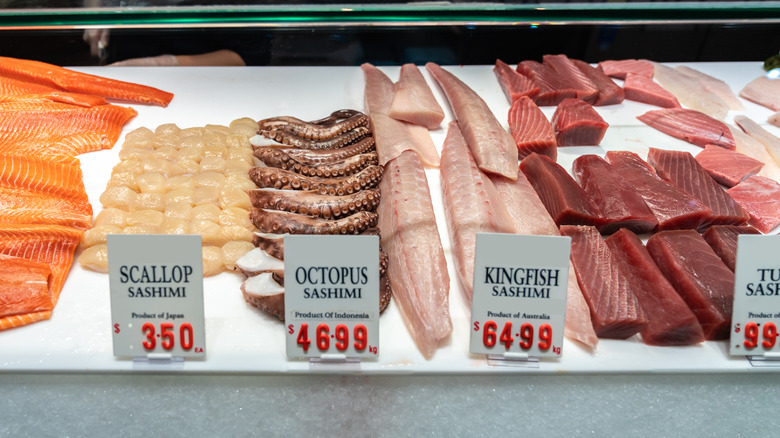Why You Should Buy Small Fish Whole
Choosing the freshest fish at the store can be a difficult task, especially if you aren't sure what signs to look for. In order to get expert advice on choosing fish for sushi and more, Food Republic spoke to Chef Cheng Lin of Shota Omakase in Brooklyn, New York. The pro chef strongly recommends skipping pre-cut fish fillets and reaching instead for a whole fish, if the species is smaller and manageable in size.
The reason behind this rationale is that buying a whole fish allows you to better inspect its freshness. "You can look for clear, bright eyes, shiny skin, firm texture, and [an] ocean-like, but not fishy, smell," Chef Lin said. Cloudy eyes, sunken-in skin, and discolored scales are signs that fish has been left out for a while or improperly stored. While the simple sniff test for choosing fish might still work, you can't look for these visual indicators when the head, scales, and tail have been removed in the butchering process.
For the best shopping experience possible, the expert also advises shopping for a whole fish at groceries and markets that have a reputation for offering high-quality seafood. A specialized fishmonger will have a larger selection than your local grocery store, and the employees at a seafood market will also likely have more extensive knowledge on different types of fish. They can assist you with choosing the right product — especially if you are new to buying and preparing fish whole.
What does sushi-grade fish really mean?
When you are browsing the seafood section in hopes of making sushi at home, don't be fooled by the phrase "sushi-grade." It is fairly common for stores to slap words like sushi-grade or sashimi-grade on seafood packaging, but there are no official standards or guidelines set by food regulation agencies that determine which products can get these labels. They are simply marketing tools meant to make customers more confident in buying the product. Even if companies privately determine that their raw fish is up to sushi standards, consumers have no way of cross-referencing that — so it's better to do the inspection yourself, rather than relying on labels.
In order to make sure fish is safe to eat, you not only want to check whole fish for freshness, but also learn safety rules to follow when making sushi or otherwise preparing your seafood. Wash and disinfect your hands, cooking surfaces, and tools before you start slicing your fish, and avoid cross-contamination by properly refrigerating it in sealed containers before it is ready to serve.
The type of fish you choose to prepare also matters. Saltwater fish are typically considered much safer to eat raw than freshwater fish, which are more prone to carrying parasites like tapeworms. Species like catfish, trout, and freshwater cod are best served cooked.


